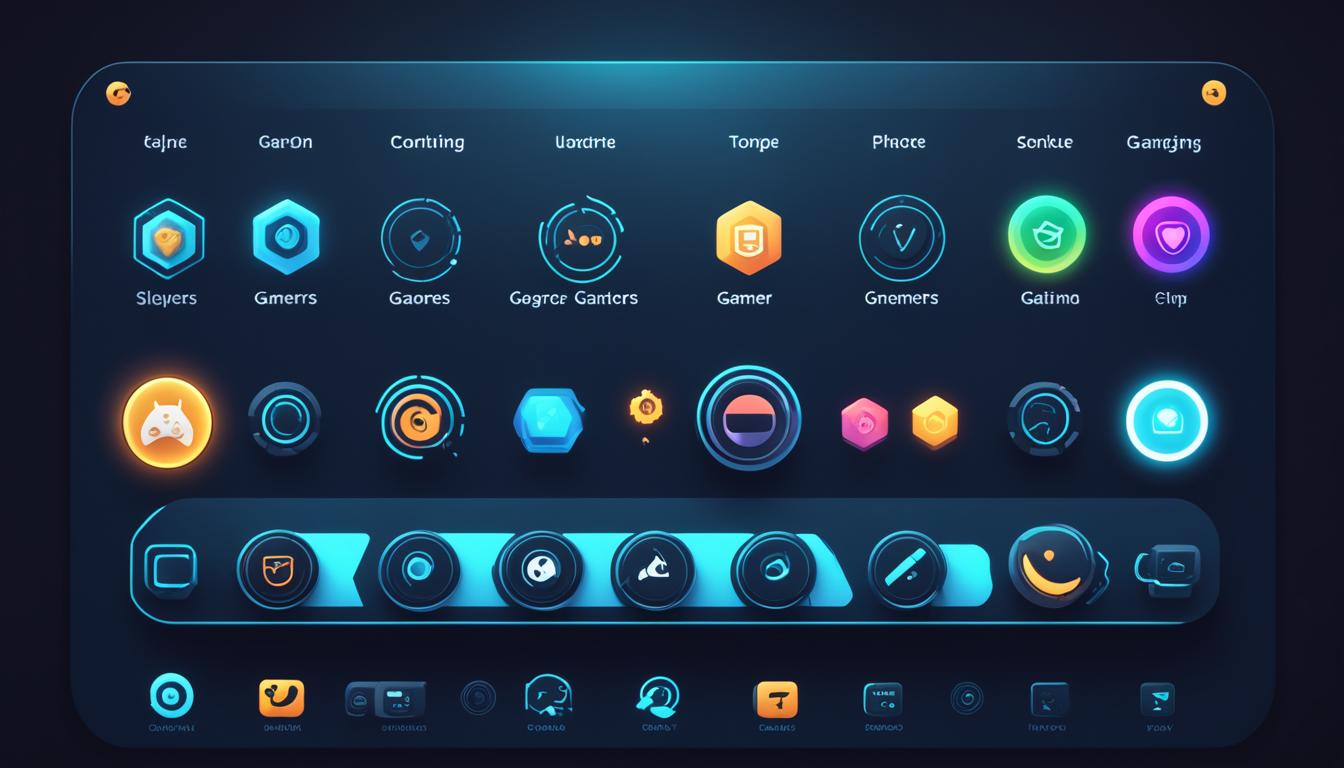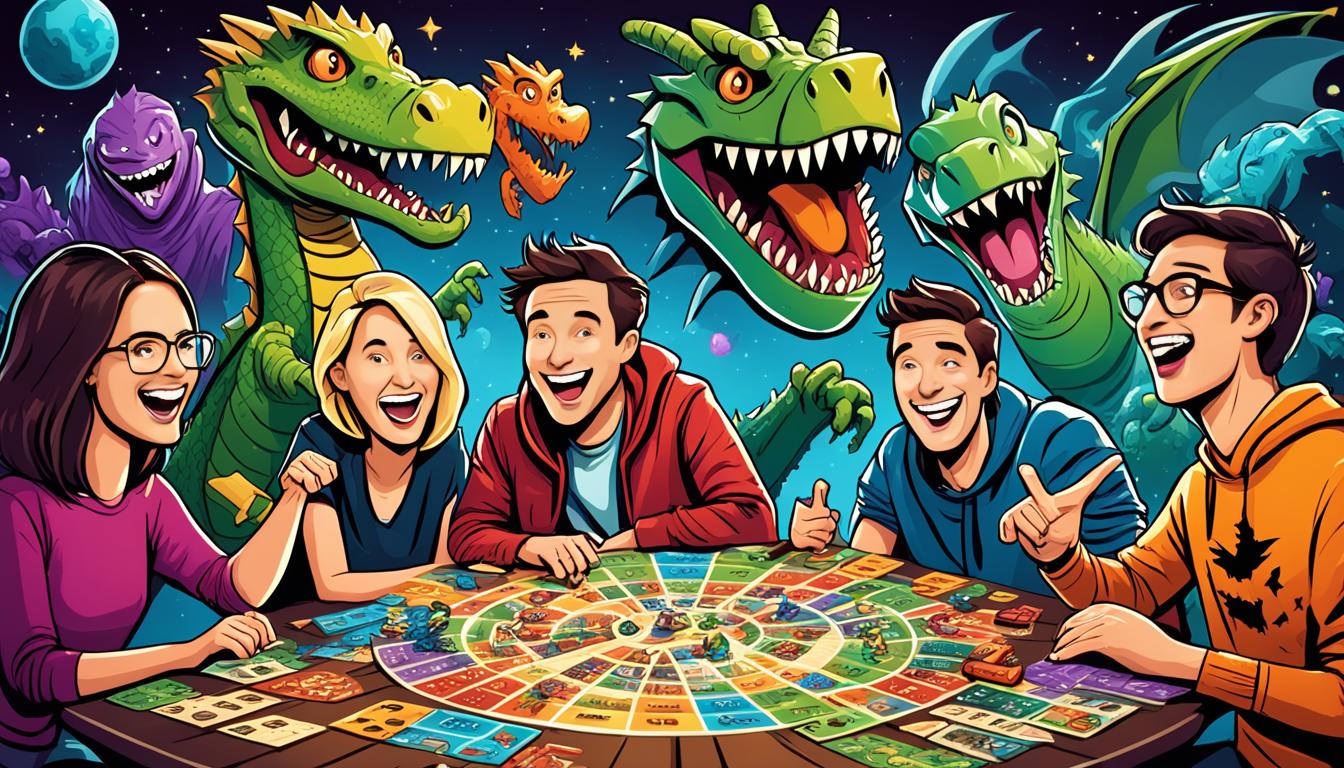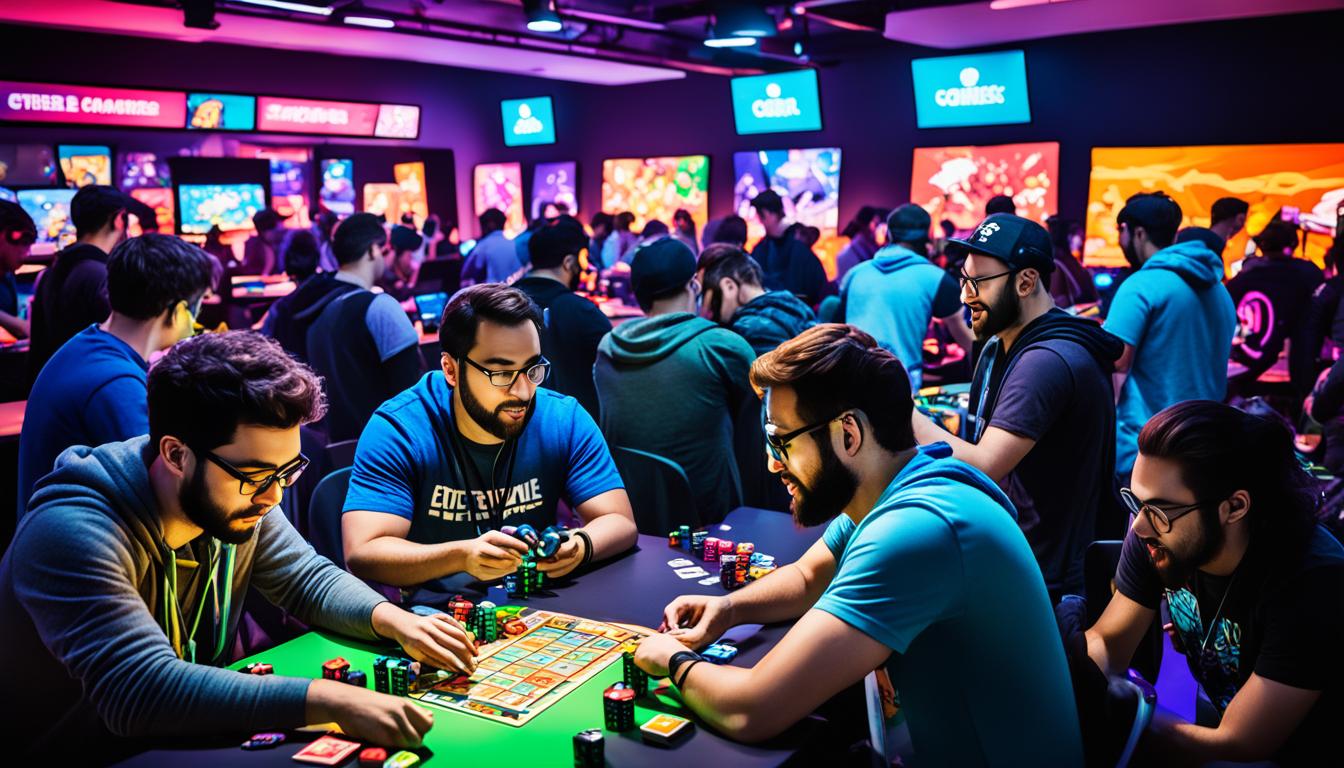In the world of gaming, every player is unique. Each individual has their own gaming preferences and user preferences that contribute to their overall gaming experience. Recognizing and catering to these diverse player preferences is crucial in creating a truly immersive and enjoyable gaming experience for all.
Game customization is a key aspect of catering to diverse player preferences. By offering customizable settings and in-game features, players have the ability to tailor their gaming experience to their individual preferences. Whether it’s adjusting the difficulty level, choosing a preferred control scheme, or customizing character appearances, these customization features enhance player experiences by allowing them to play the game in a way that suits them best.
Customizable settings empower players to take control of their gaming experience and make it truly their own. It enables them to engage with the game on a deeper level and fosters a sense of ownership and personalization. By incorporating customizable settings into game design, game developers can create a more inclusive and accommodating environment where every player can feel comfortable and enjoy the game to the fullest.
- Recognizing and catering to diverse player preferences is crucial in the gaming industry.
- Game customization through customizable settings allows players to personalize their gaming experience based on their individual preferences.
- Customizable settings empower players, creating a more immersive and enjoyable gaming experience.
- By incorporating customizable settings, game developers can create a more inclusive and accommodating gaming environment.
- Customizable settings foster a sense of ownership and personalization, enhancing player engagement and satisfaction.
The Impact of Diverse Preferences in Baseball and Gaming
The experience in running a baseball project highlighted the clash between travel ball players seeking competitiveness and Little League participants focused on community leagues. The introduction of collaboration between elite youth baseball players and Twitch streamers also resulted in a cultural clash. These instances emphasize the need to recognize and tailor approaches based on diverse player preferences.
“Understanding and catering to diverse player preferences is crucial in both the world of sports entrepreneurship and the gaming industry. Just like in baseball, where different player segments have distinct needs and preferences, gamers also have varied tastes and requirements for an optimal gaming experience. By recognizing and respecting individual preferences, companies and developers can create customized features and settings that enhance the overall enjoyment and satisfaction of their customers.”
Baseball, being a team sport, encompasses a wide range of player segments, each with their unique set of needs and desires. Travel baseball players, for instance, often prioritize competitiveness and the pursuit of excellence, while Little League participants cherish the community aspect and the joy of playing with friends and neighbors. This clash between different player segments demonstrates the importance of understanding and accommodating diverse preferences.
In the gaming industry, similar challenges arise. Gamers have different desires and gaming preferences, ranging from competitive multiplayer games to immersive single-player experiences. Companies must adapt to these diverse player preferences to fully engage their audience and cater to their customer needs.
To illustrate the impact of diverse preferences, let’s consider the example of a baseball project that sought to collaborate with Twitch streamers. The goal was to bridge the gap between elite youth baseball players and the gaming community. However, the introduction of this collaboration resulted in a cultural clash. The travel ball players, who were used to a traditional and competitive atmosphere, struggled to understand and adapt to the gaming culture represented by the Twitch streamers. This clash highlights the importance of recognizing and respecting the unique preferences and cultures within each player segment.
In conclusion, recognizing and catering to diverse preferences is crucial in both baseball and gaming. By understanding the different needs and desires of player segments, companies and developers can tailor their approaches, create customizable settings, and provide personalized experiences that cater to the diverse preferences of their customers. This enhances the overall gaming experience and ensures customer satisfaction.
Diverse Player Preferences in Baseball and Gaming
| Player Segments | Baseball | Gaming |
|---|---|---|
| Travel Ball Players | Seek competitiveness | Often prefer competitive multiplayer games |
| Little League Participants | Community-oriented | Enjoy games with friends and neighbors |
| Elite Youth Baseball Players | Strive for excellence | May be interested in collaborative gaming experiences |
| Twitch Streamers | N/A | Represent gaming culture and community |
Understanding Different Learning Styles in Education
The way individuals process and learn information varies from person to person. Understanding different learning styles is crucial in education to create an engaging and effective learning environment. The VARK model provides a framework for categorizing learning styles into visual, auditory, reading and writing, and kinaesthetic preferences. By recognizing these styles and tailoring instructional methods accordingly, educators can enhance student comprehension and engagement.
Visual learners grasp concepts best through visual aids such as charts, diagrams, and images. They rely on visual representations to understand and recall information effectively.
Auditory learners learn through listening and prefer discussions, lectures, and oral explanations. They benefit from hearing information and engaging in meaningful conversations.
Reading and writing learners process information through reading, writing, and note-taking. They excel in activities that involve reading texts, writing summaries, and taking detailed notes.
Kinaesthetic learners thrive in hands-on, experiential learning activities. They prefer engaging in physical activities, role-plays, simulations, and experiments to reinforce their understanding of concepts.
Applying Learning Styles in Education
When designing lesson plans, educators can incorporate various strategies to accommodate different learning styles:
- For visual learners, provide visual aids such as infographics, charts, and videos to convey information.
- Auditory learners benefit from discussions, group activities, and verbal instruction. Incorporate opportunities for oral presentations and debates.
- Reading and writing learners thrive in reading assignments, written exercises, and note-taking. Encourage them to write summaries and engage in reading comprehension activities.
- Kinaesthetic learners engage best with hands-on activities, experiments, and role-plays. Incorporate interactive demonstrations and laboratory experiments to promote active learning.
By incorporating these strategies, educators can foster a more inclusive and effective learning environment by addressing the diverse learning styles of their students.
“The VARK model categorizes learning styles into visual, auditory, reading and writing, and kinaesthetic preferences. By recognizing and accommodating these styles, educators can create a personalized and engaging learning experience for every student.”
Accommodating Learning Styles in Higher Education
In today’s higher education environment, it is essential to recognize and accommodate the diverse learning styles of students. By tailoring teaching methods and incorporating interactive displays, educators can create an inclusive learning experience that caters to the needs of visual learners, auditory learners, reading and writing learners, as well as kinaesthetic learners.
Visual Learners
Visual learners benefit immensely from visual aids such as diagrams, charts, infographics, and visual presentations. These learners have a strong preference for processing information through images and visual representations. By utilizing interactive displays and incorporating visual elements into lectures and coursework, educators can effectively engage visual learners and enhance their understanding and retention of the material.
Auditory Learners
For auditory learners, speaking and listening exercises are vital for optimal learning. These learners thrive in group discussions, lectures, and oral presentations. To accommodate auditory learners, professors can incorporate class discussions, encourage student participation, and utilize audio recordings or podcasts as supplemental resources. This enables auditory learners to actively engage with the content and improve their comprehension and retention.
Reading and Writing Learners
Reading and writing learners excel when given the opportunity to engage with the material through note-taking, reading activities, and written assignments. These learners prefer to process and comprehend information by reading and writing. Professors can accommodate these learners by encouraging note-taking during lectures, providing written assignments and readings, and fostering a classroom environment that promotes critical reading and analytical writing skills.
Kinaesthetic Learners
Kinaesthetic learners engage best with hands-on activities and simulations. These learners learn by doing and experiencing the material first-hand. Professors can accommodate kinaesthetic learners by incorporating interactive experiments, group projects, role-playing scenarios, and practical applications of the subject matter. These active learning methods provide kinaesthetic learners with opportunities to fully engage with the material and deepen their understanding.
In conclusion, by recognizing and accommodating different learning styles, higher education institutions can create a more inclusive and effective learning environment. Utilizing teaching methods that cater to visual, auditory, reading and writing, and kinaesthetic learners, and incorporating interactive displays and various hands-on activities, professors can ensure that all students have the opportunity to thrive and succeed in their academic pursuits.
Factors Influencing Learning Styles of Students
Learning styles among students are influenced by various factors that shape how they engage with and absorb information. These factors include:
- Socioeconomic Status: Economic backgrounds can affect the availability of resources and support, influencing learning preferences.
- Family Environment: The dynamics within a student’s family, including parental involvement and support, can impact their learning style.
- Language Proficiency: Proficiency in the language of instruction can affect a student’s ability to understand and process information.
- Past Experiences: Previous educational experiences or personal experiences may shape a student’s preferred learning style.
- Information-Consuming Patterns: The way students consume and process information, such as through reading, listening, or visualizing, can influence their learning preferences.
- Introversion and Extroversion: The extroverted or introverted nature of a student’s personality may influence their preferred learning environment and interaction with others.
- Technological Exposure: Exposure to technology and digital tools can impact a student’s comfort level and preference for incorporating technology into their learning process.
Understanding these factors is crucial for educators to create tailored learning experiences that cater to the diverse learning styles of their students. By accounting for these influences, teachers can better engage students and promote effective learning outcomes.
One effective way of visualizing the different factors influencing learning styles is through the use of a table. The table below provides a summary of the key factors and their impact on learning preferences:
| Factors | Impact on Learning Preferences |
|---|---|
| Socioeconomic Status | Influences the availability of resources and support |
| Family Environment | Affects the level of parental involvement and support |
| Language Proficiency | Impacts the ability to understand and process information |
| Past Experiences | Shapes preferred learning styles based on prior educational or personal experiences |
| Information-Consuming Patterns | Influences how students process and engage with information |
| Introversion and Extroversion | Affects the preferred learning environment and interaction with others |
| Technological Exposure | Impacts comfort with and preference for technology in the learning process |
By considering these factors and adopting instructional strategies that accommodate diverse learning styles, educators can create inclusive learning environments that meet the needs of all students.
Personalized Adaptive Learning: Tailoring Education to Diverse Learning Styles
Personalized adaptive learning is an innovative teaching approach that recognizes the diverse learning styles and preferences of students. It goes beyond a one-size-fits-all approach by leveraging technology and data analytics to dynamically modify educational materials and assessments, catering to individual needs.
By personalizing the learning experience, students are more engaged and motivated, leading to better comprehension and improved academic performance. This tailored approach acknowledges that students have different strengths, weaknesses, and ways of absorbing information.
“Personalized adaptive learning acknowledges that students have different strengths, weaknesses, and ways of absorbing information.”
Through the use of technology, such as interactive learning platforms and online tools, educators can gather data about students’ progress, learning styles, and areas of difficulty. These insights enable teachers to design personalized learning paths and adapt teaching methods to accommodate diverse learning styles.
Benefits of Personalized Adaptive Learning
Adopting personalized adaptive learning in the classroom has several advantages:
- Catering to Diverse Learning Styles: By tailoring instruction to students’ individual preferences, educators can provide a more inclusive and effective learning environment.
- Enhanced Engagement: Personalization increases student engagement, motivation, and enthusiasm for learning.
- Improved Comprehension: The use of adaptive methods helps students grasp concepts more effectively, leading to better comprehension and retention.
- Higher Academic Performance: Personalized learning has been associated with improved academic outcomes, as students receive targeted support and guidance.
With the advancements in technology and the availability of data analytics, personalized adaptive learning has the potential to revolutionize education by optimizing the learning experience for each student.
Implementing Personalized Adaptive Learning
Integrating personalized adaptive learning into educational institutions requires careful planning and collaboration between educators and technology experts. Here are some steps to consider:
- Assessing Learning Styles: Conduct assessments and surveys to identify students’ preferred learning styles and tailor instruction accordingly.
- Selecting Adaptive Tools: Choose technology platforms and software that provide adaptive features and analytics to support personalized learning.
- Designing Customized Content: Develop or curate content that aligns with diverse learning styles, ensuring it is accessible to students across different backgrounds and abilities.
- Monitoring Progress: Regularly analyze students’ progress and feedback to refine and customize the learning experience further.
By embracing personalized adaptive learning, educational institutions can offer a more tailored and inclusive approach that maximizes student potential and optimizes learning outcomes.
Unlocking Potential: A Visual Guide to Personalized Adaptive Learning
Personalized adaptive learning is revolutionizing the education landscape by tailoring the learning experience to accommodate diverse learning styles. This innovative teaching approach takes into consideration factors like cultural background, socioeconomic status, and family environment to create a customized curriculum for each student.
By leveraging technology and harnessing the power of data analytics, personalized adaptive learning goes beyond the traditional one-size-fits-all approach. It utilizes real-time data to modify educational materials and pacing, ensuring that students receive targeted instruction based on their unique needs and preferences.
Through personalized adaptive learning, students engage in a tailored curriculum that caters to their individual learning styles. Visual learners benefit from interactive displays and visually rich content, while auditory learners thrive in discussions and listening activities. Reading and writing learners excel in note-taking and reading assignments, while kinaesthetic learners thrive in hands-on activities and simulations.
Furthermore, personalized adaptive learning offers a structured framework that allows educators to track and analyze student progress more effectively. By continuously gathering data on each student’s performance, educators can identify areas of improvement and provide timely interventions to support students’ learning journey.
With personalized adaptive learning, the potential for student success is unlocked. This innovative approach enhances engagement, comprehension, and academic performance while fostering a sense of empowerment and ownership in the learning process.
By embracing technology and data analytics, personalized adaptive learning enables educators to create a dynamic and responsive learning environment that caters to the diverse learning styles of all students. Retention rates increase, satisfaction levels grow, and attendance improves as students feel seen, valued, and empowered in their educational journey.
Benefits of Personalized Adaptive Learning:
- Enhanced student engagement and motivation
- Improved comprehension and retention rates
- Customized learning experiences for diverse learning styles
- Timely interventions and targeted support
- Real-time tracking and analysis of student progress
“Personalized adaptive learning offers a student-centered approach that recognizes the individuality of each learner and empowers them to reach their full potential.”
Case Study: Boosting Student Performance with Personalized Adaptive Learning
In a recent study conducted at Smithson University, a personalized adaptive learning program was implemented across various disciplines. The results were remarkable, with students exhibiting a significant improvement in academic performance. The tailored curriculum and innovative teaching approach provided students with the necessary support and resources to thrive in their studies.
| Benefits | Percentage Improvement |
|---|---|
| Test Scores | 25% |
| Retention Rates | 15% |
| Course Completion | 20% |
This case study showcases the transformative power of personalized adaptive learning. By catering to diverse learning styles and customizing the learning experience, students experience significant improvements in their academic performance, ultimately unlocking their full potential.
Personalized adaptive learning is reshaping education, empowering students, and transforming traditional teaching methodologies. By leveraging technology and data analytics, educators can create a learning environment that nurtures and supports the unique needs of every student, ensuring a brighter future for all.
Recognizing and Embracing Diverse Learning Styles in Education
Recognizing and embracing diverse learning styles is essential for creating an inclusive educational environment. By understanding and catering to the individual needs of students, teachers can provide an educational experience that caters to their unique learning preferences. This holistic approach ensures that students can fully engage with learning materials, leading to better grades, motivation, critical thinking, and problem-solving skills.
Creating an Inclusive Educational Environment
An inclusive educational environment acknowledges that students possess different learning styles, such as visual, auditory, reading and writing, and kinaesthetic preferences. It is essential to create a classroom setting that appeals to all learning styles, promoting an environment where every student can thrive.
- Visual learners: These students benefit from visual aids like diagrams, charts, and videos. Incorporating visual elements into lesson plans and presentations can help them absorb information more effectively.
- Auditory learners: These students excel in activities that involve speaking and listening. Implementing classroom discussions, group activities, and oral presentations can support their learning style.
- Reading and writing learners: These students process information best through note-taking, reading, and writing activities. Providing ample opportunities for reading assignments, written reflections, and written assessments can cater to their learning style.
- Kinaesthetic learners: These students engage best through hands-on activities, simulations, and physical movement. Incorporating experiments, role-playing, and interactive exercises can enhance their learning experience.
By diversifying teaching methods and appealing to different learning styles, teachers can create a well-rounded educational environment that caters to the individual needs of all students.
Promoting Inclusive Teaching Strategies
Inclusive teaching strategies ensure that all students have equal opportunities to succeed in the classroom. Here are some approaches that teachers can adopt:
- Varied instructional methods: Incorporate a mix of visual, auditory, reading and writing, and kinaesthetic activities in lesson plans to engage students with different learning styles.
- Flexible assessments: Offer a range of assessment methods, such as written tests, oral presentations, group projects, and multimedia assignments, allowing students to demonstrate their understanding in ways that align with their learning preferences.
- Individualized support: Provide personalized guidance and support to students based on their specific learning needs. This may include one-on-one conferences, targeted feedback, and additional resources tailored to their learning styles.
- Collaborative learning: Foster a collaborative and inclusive classroom culture where students can work together to solve problems, share perspectives, and learn from each other.
By implementing these inclusive teaching strategies, educators can create an environment where all students feel valued, supported, and empowered to reach their full potential.
Quote
“Inclusive teaching is not just about recognizing diverse learning styles; it’s about embracing them. It’s about creating an educational environment where every student feels seen, heard, and respected.” – Dr. Linda Johnson, Professor of Education
An Illustration of Inclusive Teaching
| Learning Style | Characteristics | Teaching Strategies |
|---|---|---|
| Visual learners | Prefer visual aids and imagery | Incorporate diagrams, charts, and videos into lessons |
| Auditory learners | Benefit from listening and discussions | Engage in classroom discussions and provide opportunities for oral presentations |
| Reading and writing learners | Process information through reading and writing | Assign reading materials, provide written assignments, and encourage note-taking |
| Kinaesthetic learners | Engage best with hands-on activities | Include experiments, interactive exercises, and simulations in lessons |
By adopting an inclusive teaching approach that caters to diverse learning styles, educators can create an environment where every student can thrive, contributing to their academic and personal growth.
Conclusion
In today’s dynamic landscape, where diverse player preferences and learning styles play a significant role, customization and personalization are key. Whether in the realm of gaming or education, recognizing and respecting individual needs is crucial for creating an inclusive environment that caters to the diverse needs of players and students alike.
By offering customizable settings and materials, game developers and educators can provide tailored approaches that enhance the overall experience. This tailored approach extends to personalized learning, where individualized strategies and resources are employed to meet the unique needs of each learner.
Inclusive education is not just about accommodating students with special needs, but also about acknowledging and embracing diverse preferences and learning styles of all individuals. By doing so, we create an educational environment that fosters engagement, motivation, and academic success. Through this approach, students can develop essential skills such as critical thinking and problem-solving, while also enjoying a more enjoyable and effective learning experience.

As the founder of Friends Game Night, Ryan channels his enthusiasm for gaming into a platform that celebrates the magic of gathering friends around the digital or physical tabletop. Through his website, Ryan shares insightful articles, reviews, and recommendations, aiming to inspire others to create their own memorable gaming moments.












